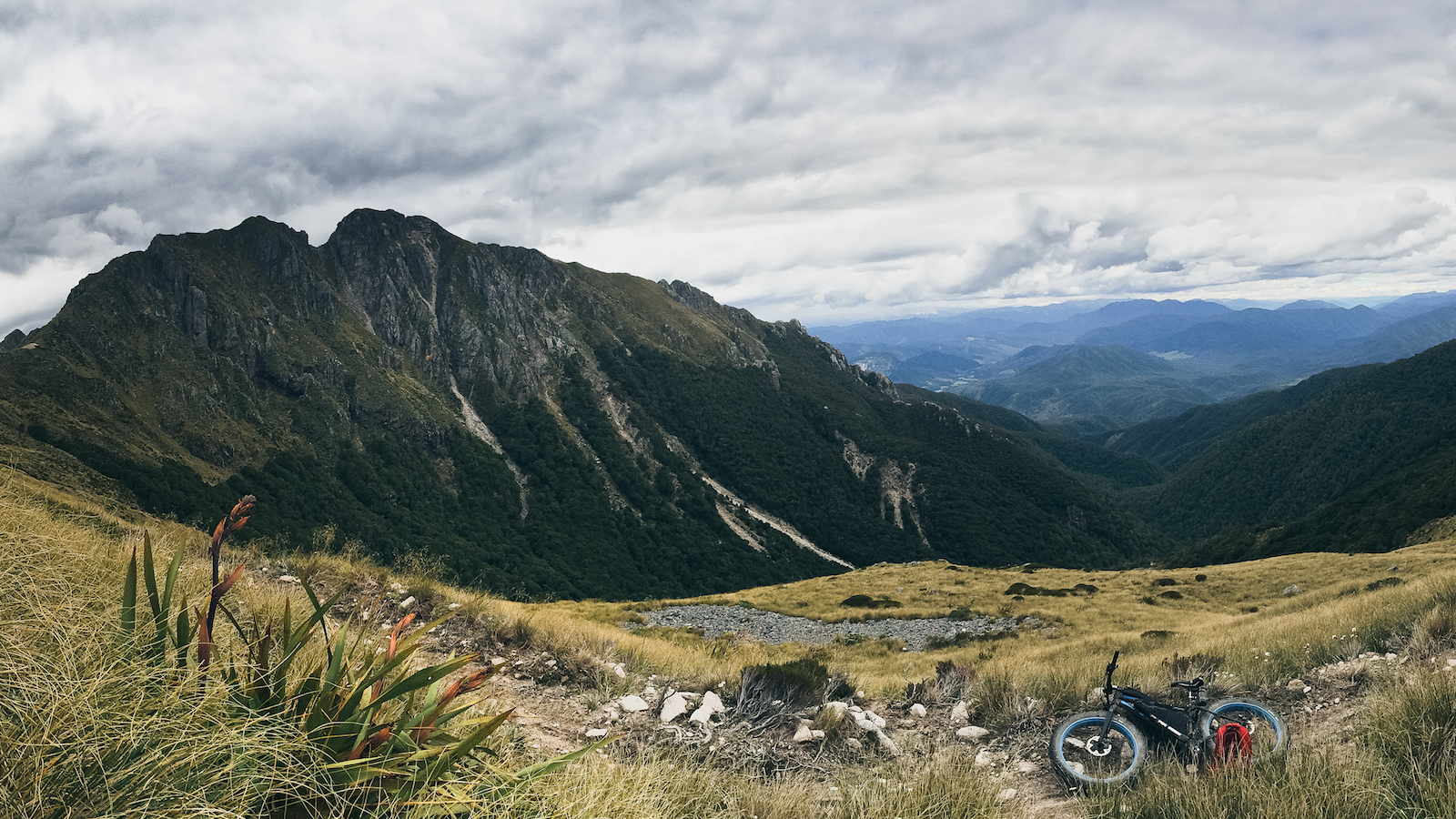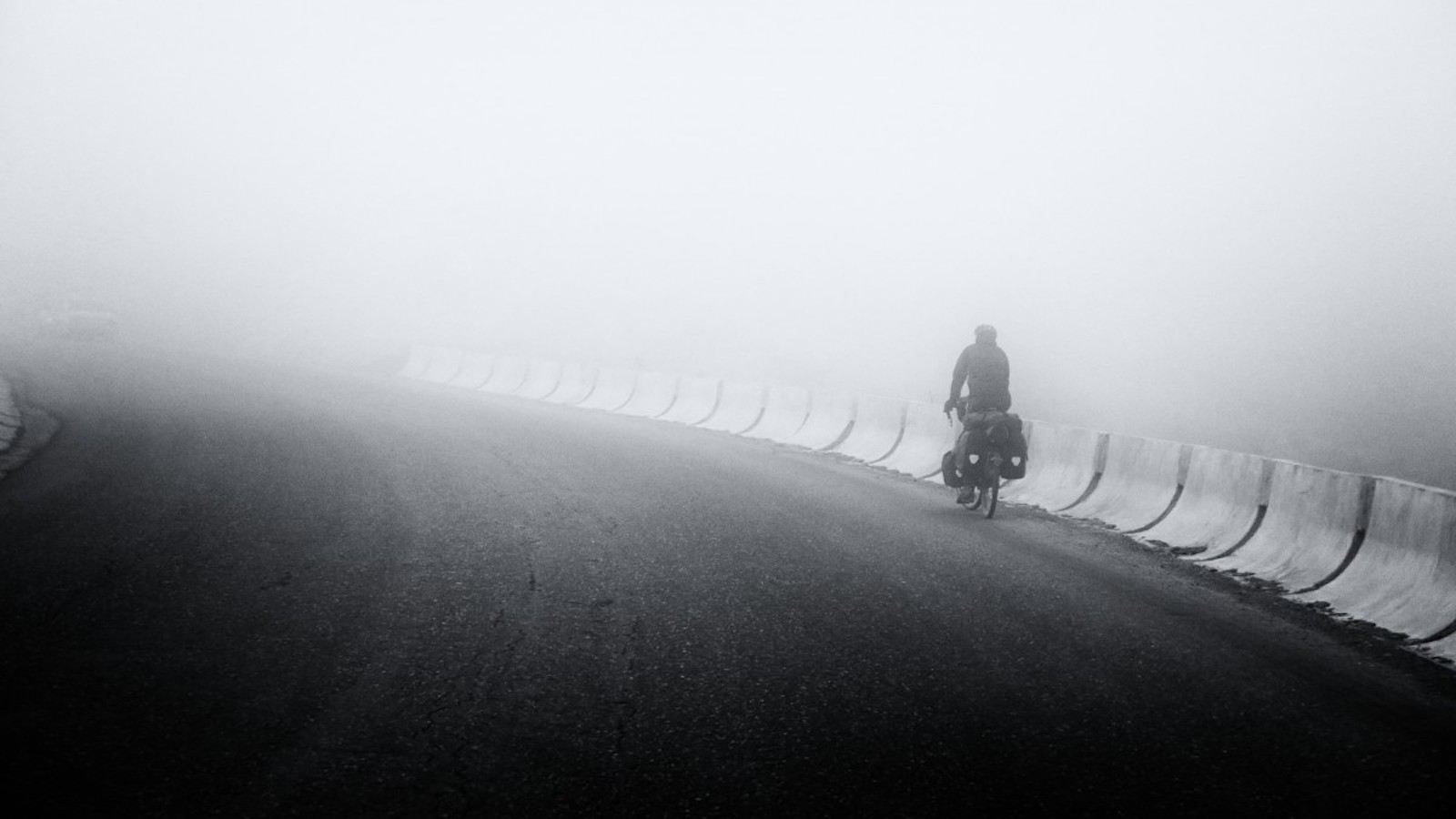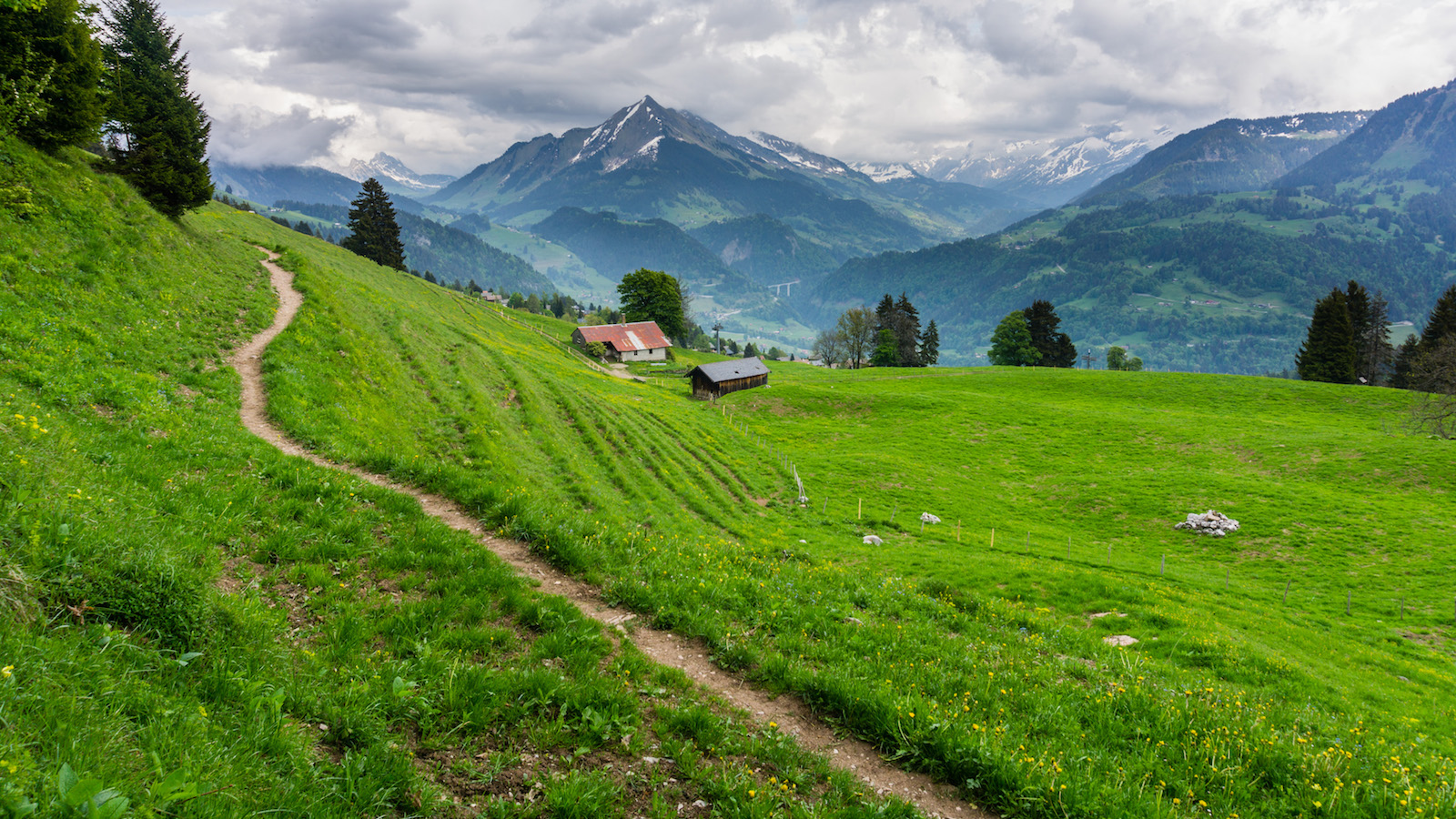Bikepacking routes: 10 of the best biking adventures from around the world
Here’s a taste of some of the finest two-wheeled bucket list adventures around the rest of the world

We’ve covered some of the best bikepacking routes in the USA and the UK; here’s a taste of some of the finest two-wheeled adventures around the rest of the world, from the Arctic coast to the southwestern tip of Australia.
They’re mostly away from tarmac, and generally based around the option of camping out; one thing they all have in common, they’ll all be stunning and utterly memorable.
Australasia

Old Ghost Road, New Zealand
52 miles, 9,000ft, 1-3 nights
Regularly cited as the finest singletrack bikepacking experience in New Zealand, the 52-mile Old Ghost Road is a resurrected gold-miners route, discovered on old maps and carefully recreated for mountain bikers.
In places, it’s only a couple of feet wide, with steep drops and extremely tight hairpins. Most riders would expect to walk at least some parts. Its waterfalls, forests, narrow suspension bridges, and genuinely jaw-dropping alpine views will stay with you a long time.
Despite cutting through wilderness areas, the track is very well maintained. There are four remote but well-equipped huts that need to be booked at least a month in advance, plus campsites. You can pay for supplies to be dropped by helicopter if you’re feeling flush, or ride it like a classic bikepacking trip. There’s plenty of water en route but no resupply, and you’ll need to pack for changeable weather in all seasons - the high points of 1300m are equivalent to double that or more in other parts of the world in terms of weather conditions.
You can make this into a 110-mile loop from Westport on the coast, and opportunities for more mountain biking during your stay in New Zealand are endless. The Old Ghost Road is one of many routes maintained by the New Zealand Cycle Trail organization; another bikepacking classic is the 145-mile Mountain to Sea route on the North Island.
- Three words: Breathtaking, technical, timeless
- What bike: Mountain bike (full-suspension or hardtail)
- How remote: Exposed and perilous in places with no resupply, but well maintained
- Start and finish: Lyell (southern end of the trail) to Seddonville, South Island
- Getting there: Local plane to Westport, 45 minutes drive from the trailhead. Plenty of shuttle services
- Best times: Open all year but February and March are two of the best months
Munda Biddi Trail, Australia
650 miles, 13,700ft, 10-20 nights
Munda Biddi means ‘path through the woods’ in one of Australia’s Nyungar dialects, and it’s worth taking this stunning trail at a pace that lets you savor it. Waterfalls and swimming holes invite you in, and the views demand you rest awhile.
The 1000km Munda Biddi trail is waymarked, with day-ride sections which are family-friendly. It has free camping huts along the way and towns and villages for resupplies. Don’t let that lull you into thinking that this is some sanitized, theme-park experience. The forest is wild and pristine, the river crossings can be fast-flowing, and the trail may get washed out and will make deceptively frequent use of your wide knobbies and lowest gears.
For your efforts, you’ll revel on wide dirt jeep trails in unspoiled bushland, singletrack through wildflowers, eucalyptus forest ways, stunning rock formations, and ocean views near the end. You can expect to encounter cockatoos, emus, and kangaroos along the way, along with a whole safari park worth of other wildlife. If you have a head for heights and your legs are still up to it, you can even climb the spiraled pegs on lookout trees up to 75m high.
- Three words: Immersive, achievable, natural
- What bike: MTB; at a pinch a gravel bike with 50mm+ tires
- How remote: A town or a camping hut every 25 miles or so
- Start and finish: Perth to Albany
- Getting there: Fly to Perth, and get the bus back from the end
- Best times: September to November, or March to May, avoiding extreme heat and the worst of the rains
Asia

Pamir Highway, Kyrgyzstan, Tajikistan
800 miles, 60,000ft, 3+ weeks
The second-highest road in the world, the stunning Pamir Highway is a classic route for adventure cyclists. Just beyond the northern tip of the Himalayas, it crosses passes of more than 4000m, below 7000m peaks. It’s technically a paved road, and it does have some welcome tarmac stretches, but it’s better described as a rough rock, sand and dirt track, where precipitous hairpins perch above whitewater rivers. Vehicles inch their way along, outnumbered by cyclists, and adventure will be in no short supply.
In places, villages are abundant, in others, you will go days between them. Shops are few and basic, and you will often do best to buy bread from villagers, who bake their own. Needless to say, have an extremely well-bedded-in bike, bring your own spares and know how to use them. Pack warm, too. Above 3000m, your water may freeze overnight, and though it is high desert, weather can be icy cold, windy and rainy or snowy at any time.
Riders report welcoming and hospitable people, plenty of places for amazing wild camping, and homestays and guesthouses along the way. Canyons, valleys, plains, red-rock lunar landscapes, and endless amazing snow-capped views of ranges including the fabled Hindu Kush come for free.
If you want an even more remote option – or the option of turning this U-shaped ride into a loop – you can consider tackling the ultra-remote and stunning unpaved 300km road through the Bartang Valley
- Three words: World-famous, oxygen-depleted
- What bike: Gravel or MTB with 50mm+ tires. Reliability is key
- How remote: Super-exposed, but regular human contact
- Start and finish: Dushanbe, Tajikistan, to Osh, Kyrgyzstan
- Getting there: Osh and Dushanbe both have airports
- Best times: June to September
Japanese Odyssey
1500+ miles, 70,000+ft, 10 nights
Here’s a change: it’s self-supported bikepacking, it involves backroads and gravel, and apart from a number of mandatory checkpoints, the route choice is up to you. The Japanese Odyssey is an idiosyncratic, wonderful, and – if you’re going to hit the 11-day deadline, extremely tough – annual tour through the roads less traveled in Japan.
The event area changes each year. There are no prizes or official finishing times; the emphasis is on the adventure and encounters with the land and the people of Japan. And of course the food, and the traditions; despite your target times, you may find it hard to resist the volcanic hot springs that dot the backcountry.
- Three words: Uncertainty, exploration, backroads
- What bike: Fast gravel
- How remote: The road less travelled...
- Start and finish: Varies
- Best times: Event is normally in September
Americas
Baja Divide, Mexico
1650 miles, 90,000ft, 5-7 weeks
Cactus, canyons, coasts… there’s only one paved highway on Baja California, and this route barely touches it. The Baja is the finger of Mexico that extends 800 miles south of the border with the USA, with the Pacific on its west, and the Gulf of California to the east. Ranging from 25 to 150 miles wide, it’s a stunning landscape of rugged coastlines, beaches, and inland mountains, and this route showcases it spectacularly.
Bikepacking legends Nicholas Carman and Lael Wilcox spent three years refining the route, pulling cactus thorns out of fat-bike tires, and loving the contrast between bustling highway towns and week-long stints of wild-camping in the desert. In those towns, accommodation is cheap, and seafood tacos are irresistible.
You may need to carry three days of food and more than 10 liters of water; on the plus side, you’ll need little in the way of cold-weather kit.
- Three words: Warm, liberating, delicious
- What bike: Plus-bikes with 3-inch tubeless tires
- How remote: You’ll need to carry 3 days of food at some points
- Start and finish: San Diego, USA, to San José del Cabo, Mexico
- Getting there: Airports near the start and end, and a daily bus service
- Best times: November to March
Western Europe
European Divide Trail
4700 miles, 240,000ft, 2-6 months
Nomadic bike-fettler and wordsmith Andy Cox spent three years devising and riding this momentous 4,700 mile dirt route which stretches from the bare rock, bogs and lakes of Arctic Norway, to the loose, rocky trails of the blazing Iberian peninsula.
He’d ridden and enjoyed many of the classic European bikepacking routes but felt they were often too technical to be done month after month on a super-long tour. Hence this route, devised to be rideable but wild, meticulously mapped and documented on Komoot. It could be ridden in one epic journey, or savored in segments, with as many breaks and diversions as you fancy (how about adding the magnificent Hope 1000, below).
The route isn’t a ‘divide’ in the geographical sense, more a celebration of the unfolding of changes in ecosystems and climate in the way that only an epic cycling tour can do. There must be no better way of appreciating the diversity of a continent.
- Three words: Epic, rideable, diverse
- What bike: Gravel (40-50mm+) or MTB
- How remote: Up to 160 miles between resupply in parts of Scandinavia
- Start and finish: Arctic Ocean to the Atlantic Ocean: Grense Jakobselv in Norway to Cabo St Vincent in Portugal
- Getting there: Flights within 60km of the start and 100km of the finish
- Best times: Starting May/June from the north, or April in the south

Hope 1000, Switzerland
630 miles, 96,000ft, 8-14 nights
A love letter to Swiss off-road riding, this magnificent route is designed to be accessible and rideable, leaving you to focus on the views and the quad-busting climbs. It ticks all the boxes –towering mountains, wide-open panoramas, stunning lakes, astonishing singletrack, wildflower meadows and cowbells clanging peacefully in the distance.
The climbs are steep and frequent but designed to often ascend on smoother surfaces and descend on singletrack. Other typically thoughtful touches include routing past frequent small towns and villages: you’ll need to carry very little food or water, and while camping is easy, you could plan accommodation almost every night if you wanted to.
The route is run as a free-to-enter race each June, but you can pick up the well-annotated GPX from other sites.
- Three words: Immaculately planned, breathtaking
- What bike: Hardtail or full-suss MTB
- How remote: Wild and challenging but deliberately designed with frequent resupply and water points
- Start and finish: Romanshorn to Montreux
- Getting there: The start and finish are accessible from Zurich and Geneva airports
- Best times: End of May to October
Torino-Nice Rally, Italy & France
430 miles, 65,000ft, 5+ nights
This is a peach of a ride. Bikepacking is often a solitary business, this late-season 400-mile celebration across the Alps between Italy and France adds a gently social layer.
Riders pick their own pace and their own variations in the itinerary, but there’s a convivial pre-race meal and a fine opportunity to peek at other riders’ bike setups in Turin the night before the grand depart.
It's not a traditional bikepacking ride except in its cheerful ethos and its scope for self-sufficiency, picking between rougher and smoother options as you go along, and sleeping out. Two-thirds of the ride is on tarmac; much of the rest on rocky, gravelly military stradas high on the French-Italian border. Your best bike choice is probably a robustly-tired gravel machine or light, fast MTB, but part of the pleasure is in researching the track conditions that year.
The scenery is unsurprisingly glorious. You can camp out or find lodgings, or both, and linger as long as you please over meals, whether they're in ristorante or sitting on dirt.
Riders, unsurprisingly, sign up for the following year’s event as soon as they can.
- Three words: Sociable, carefree, glorious
- What bike: Gravel or MTB; choosing is part of the strategy
- How remote: High but not remote, and you could sleep indoors each night
- Start and finish: Turin to Nice
- Getting there: Both have airports
- Best times: Ridden as an event in September, GPX available to use any time
Adriatic Crest, Croatia
380 miles, 36,000ft, 7 nights
The glinting Adriatic may often be in view, but this wonderful ride along much of the length of Croatia will take you up to 1500m, and sometimes far away from civilization. Over a week of riding it takes you through national parks of loamy forest, rugged rock and chalky doubletrack, and past huge waterfalls with swimming holes. You’ll feel an extraordinary sense of history as you wind through groves of olive, apricot and fig, and explore ancient coastal towns such as Trogir. Swimming opportunities abound, both in the hills and on the many times you descend to the sea. You’ll even hop between the beautiful islands of Cres and Krk along the way.
Better yet, you can almost double the length of this trip by joining it onto Joe Cruz’s glorious West Slovenia route, for mountains, rivers and wonderful remote dirt.
- Three words: Warm, varied, historic
- What bike: MTB or gravel
- How remote: Lots of towns in some stretches, two and a half days without, mid-ride. Water can be scarce; bring a cord to draw water from wells
- Start and finish: Ilirska Bistrica, Slovenia, to Split, Croatia
- Getting there: Fly into Ljubljana and out of Split
- Best times: May, June, September, October
Africa
Lesotho Traverse
312 miles, 44,000ft, 7 nights
Another gem from Logan Watts, this 85% unpaved week through Africa’s tiny ‘mountain kingdom’ is full of sweeping valley vistas, high mountain views and epic off-road tracks. The climax, once you’ve built up a week’s worth of altitude acclimatization, is the 2900m Sani Pass in the Drakensberg Mountains, where gradients reach 1:3 and the descent towards the finish in South Africa is unforgettable.
You won’t just be immersing yourself in the landscape. The Lesothan people are famously friendly and will always want to talk to you, which is good because you’ll need their help. Eating spots may only be a couple of chairs and a counter, and food stores may mean meals of ‘random basics’ like canned meat and cheese puffs unless you plan ahead. There are a few lodges along the way and camping is generally easy, with permission from the local chiefs, who are usually welcoming.
Take your time and be sure to visit jaw-dropping sights like the Semonkong Falls. Twin it with the Lesotho Sky stage race in September, or the 2500-mile Dragon's Spine bikepacking route across South Africa if you want to make the most of your plane ticket...
- Three words: Otherworldly, hospitable, authentic
- What bike: MTB
- How remote: Villages and lodges along the way
- Start and finish: Lesotho’s capital, Maseru, to Bloemfontein, South Africa’s capital
- Getting there: Maseru has an airport and busses run there from Bloemfontein
- Best times: October to December

Sean has old school cycle touring in his blood, with a coast to coast USA ride and a number of month-long European tours in his very relaxed palmares. Also an enthusiastic midpack club cyclocross and XC racer, he loves his role as a junior cycle coach on the Kent/Sussex borders, and likes to squeeze in a one-day unsupported 100-miler on the South Downs Way at least once a year. Triathlon and adventure racing fit into his meandering cycling past, as does clattering around the Peak District on a rigid Stumpjumper back in the day.
Height: 173cm
Weight: 65kg
Rides: Specialized Chisel Comp; Canyon Inflite CF SLX; Canyon Aeroad; Roberts custom road bike
